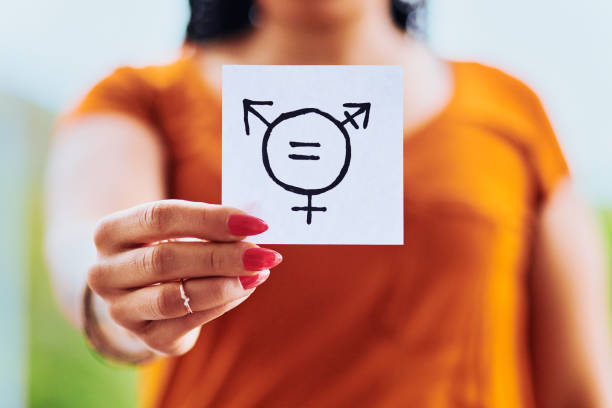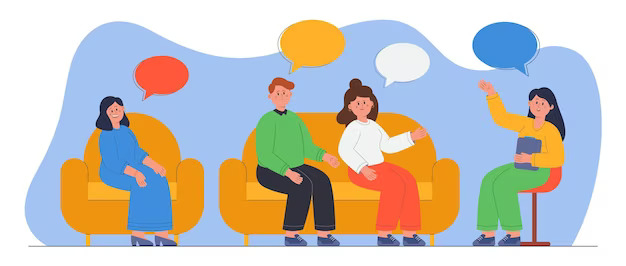The term “intersex” is used to refer to bodies that do not strictly fit into the male/female dichotomy. There are many different forms of intersex. A person born with a reproductive or sexual anatomy that does not fall exactly into the “female” or “male” categories is considered intersex. Newborns and intersex children may go through a process that alters their physical characteristics to match the binary concept of “male” or “female.” In most places, doctors always give intersex children a legal sex—usually male or female—but, much like with non-intersex people, this does not guarantee that gender identification as an adult. This raises concerns about whether it is appropriate to perform medical procedures on a child’s body when it is not necessary for the child’s health.
Medical procedures (such surgeries or hormone therapy) on children are typically not medically necessary because being intersex is a naturally occurring variety in humans and is not a health issue. It’s also more common than most people realize to be intersex. It’s challenging to estimate the precise number of intersex people.
Here are a few common misconceptions about being intersex:
-
A person who is intersex has both sets of genitalia.
One of the most widespread misconceptions about intersex is definitely this one. Intersex frequently has little to do with a person’s genitalia, much less two sets.
People with both a penis and a vaginal entrance are intersex. However, there are no known instances of people having fully formed male and female genitalia at birth. The majority of intersex individuals have genitalia that are fairly typical of either gender, with only a tiny percentage having abnormal genitalia. In truth, a person with completely conventional male or female genitalia might be referred to as a “genuine hermaphrodite” using the quaint, pseudoscientific term, which refers to someone having ovarian and testicular tissue.
-
It’s so rare
One of the most frequently cited statistics is this one. It would be more true to say that 1 in 2000 newborns delivered at hospitals with gender assignment teams have genitalia that are so abnormal that the attending physician needs the team’s specialists’ assistance in determining the infant’s sex.
Gender assignment teams are uncommon in hospitals around the world, and the majority of intersex individuals have conventional genitalia. It is important to keep in mind that, even in the majority of deliveries involving unusual genitalia, the doctor does not ask a gender assignment team for help, even if one is present. Thus, it is clear from this figure that intersex appears to be quite uncommon. It’s not!
-
When an intersex child is born, “something must be done,” as they cannot be left to grow up as they are.
Rarely does an intersex variant in a kid pose health issues that necessitate rapid medical intervention. Instead, intersex individuals experience health problems like everyone else. For instance, being a woman is not in and of itself a health issue, but there are issues that are unique to women.
We have shown that it is more advantageous for the intersex child to be permitted to grow up with their anatomy intact in the vast majority of situations where there are no health issues involved. Intersex youngsters can establish their own sense of sex and gender identity without the risk of doing irreparable harm to the development of this identity by maintaining the integrity of their bodies.
The infant can be raised with a provisional sex assignment of male or female and be allowed to determine later on whether this sex feels right for them or whether they want to make any physical changes to better fit their sense of self, as is allowed for all other humans. Even with the best of intentions, trying to decide these matters for newborns and young children is to guessing with their lives.
-
Intersex is about homosexuality
Homophobia is likely the driving force behind the pathologization of intersexuality and the prescription of frequently harsh treatments. However, there isn’t anything inherently wrong with intersexuality that would lead someone to claim that homosexuality and intersexuality are the same problem or that they are somehow connected.
There may be connections, but we don’t yet completely understand the physiological drivers. It’s crucial to realize that both folks with and without intersex disorders frequently identify as homosexual and lesbian. Similar to many intersex adults, I believe that the homosexuality debate has no bearing on how we see ourselves. More and more intersex individuals feel at ease identifying as intersex, which we believe is more realistic in defining how we experience the world.
-
Intersex is most commonly known as Disorders of Sex Development, or DSD.
For the simple reason that we are not disordered but rather unique, all members of Organization Intersex International (OII), the largest intersex organization in the world, reject the term Disorders of Sex Development (DSD). We also refuse to accept medical terminology and viewpoints that pathologize us.
The usage of this word by some intersex people does not change the fact that it is erroneous and stigmatizing to the community as a whole, just as some homosexuals see their homosexuality as an illness that needs to be treated.
-
It is possible to treat the “condition” of intersex.
Similar to eugenics, surgical “normalization” of intersex bodies tries to eliminate traits that some people deem undesirable, and it frequently causes issues that weren’t there before.
Viewing intersex variants as “medical disorders” that can be treated excuses the cruel medical procedures we are frequently forced to undergo, such as genital surgery, hormone therapy, or psychological counseling for refusing to comply.
If you’re looking for the “Online therapist India,” contact with TalktoAngel, a platform to get in touch with the top online therapists and “Online psychological counselling“.




